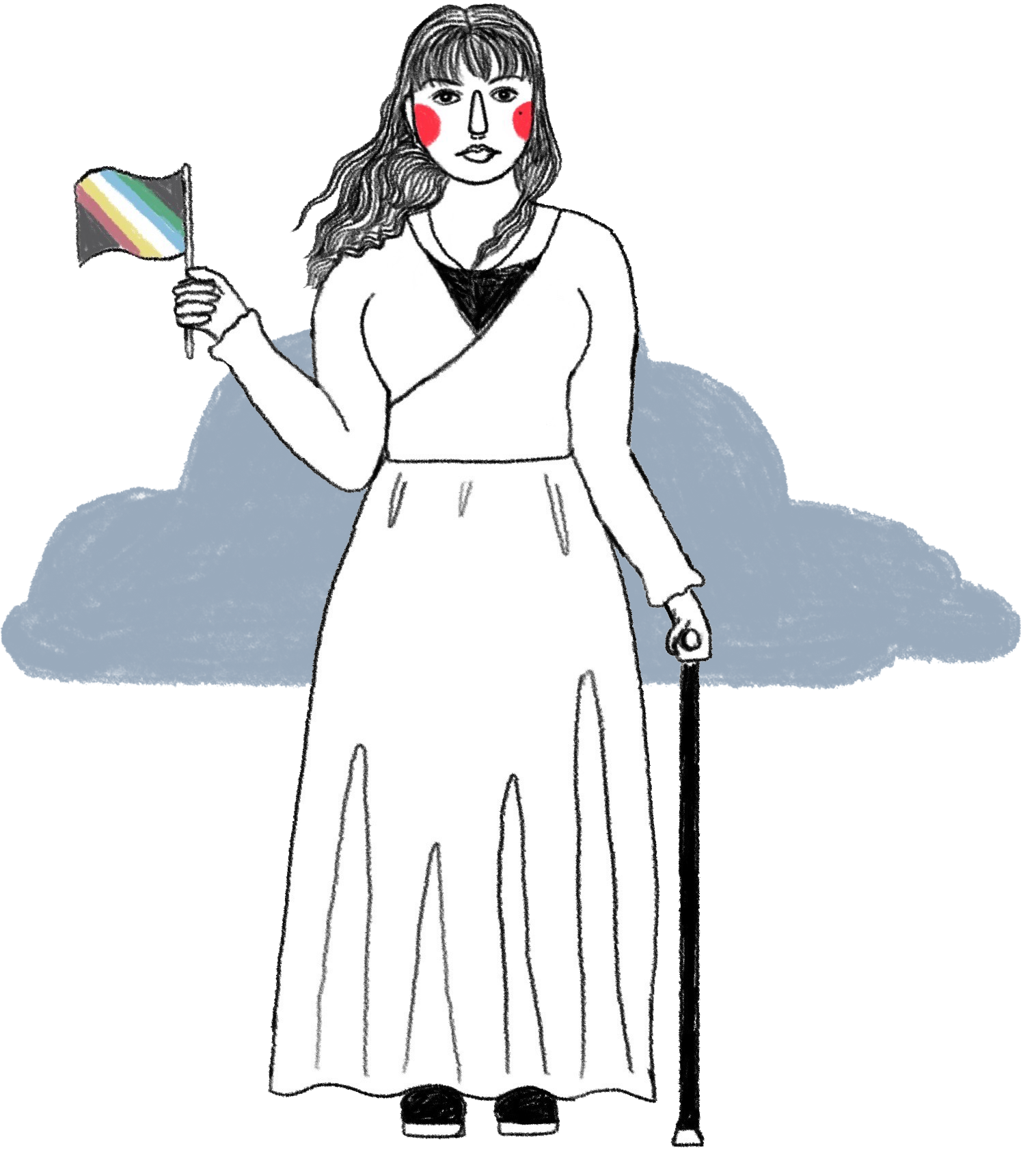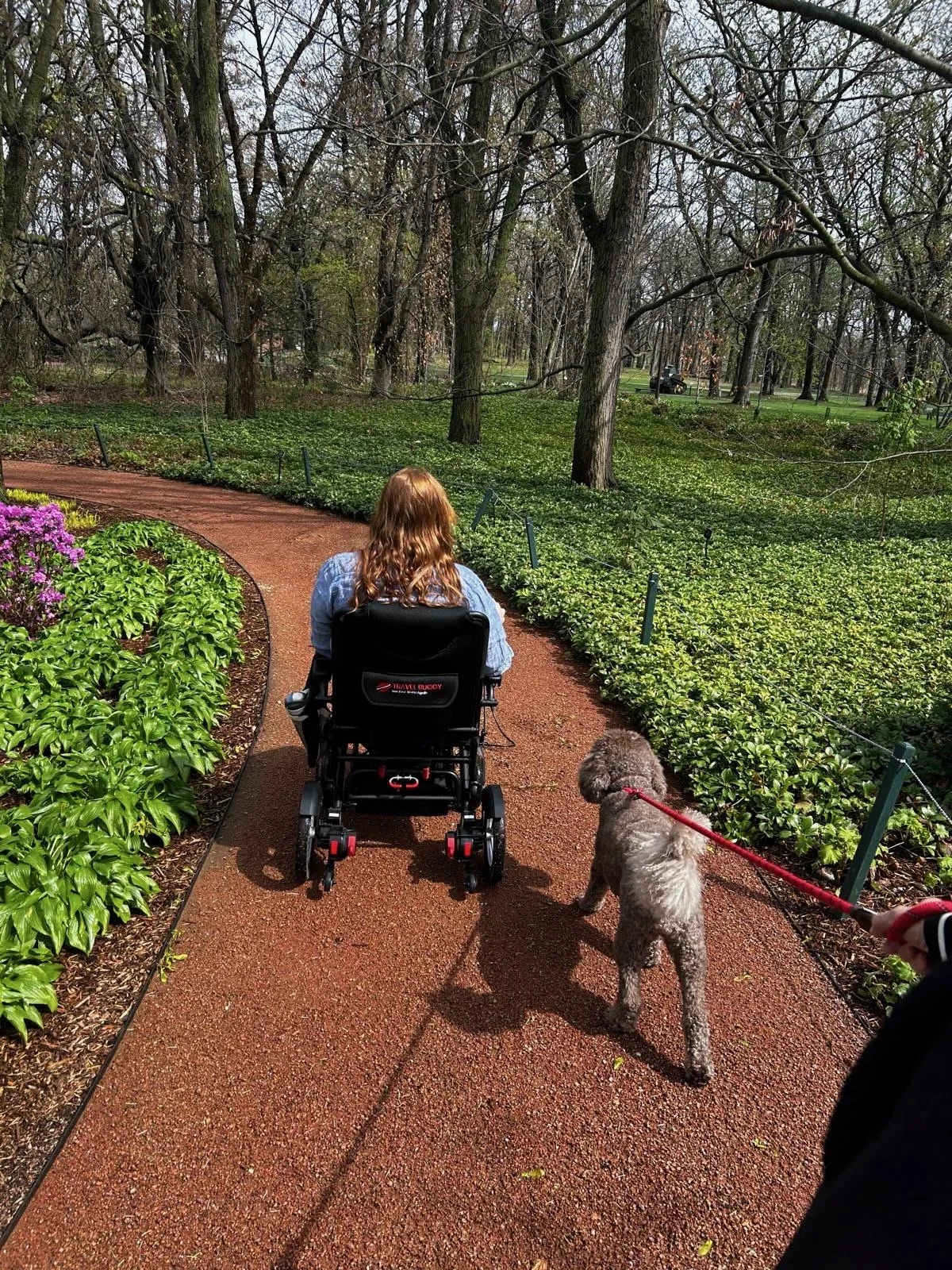Connecting with My Disabled Identity
By Lizzie Mooney
Identity as a disabled person is often shaped by how you interact with the world, but what happens when your symptoms become so overwhelming that you have no choice but to isolate from significant parts of life?
Despite having been sick with ME for over half my life, I have only recently come to understand and really identify as being disabled. When I was 9, I went from totally healthy to sick, and at age 12, I became severely ill and bedbound. At the time, the disabled identity was not something that even crossed my mind. I was just sick. I had not seen many examples of those who identified as being sick and disabled, and having all my focus suddenly go to surviving, when being "ill" already made me feel like my perspective was unique, it felt very lonely.
Around the time I turned 19, my health began to improve so much that I was no longer bedbound. Soon, I started to leave the house, and I was able to see daily life and the people in it. I became someone who can and does enter the world as part of daily life, as opposed to the years when outings were in ambulance stretchers and hospital beds. Soon after, I developed the ability to navigate the world more independently, which led to the next step in my progress: getting a power chair. Maneuvering my body in this new, freeing way made me feel like an explorer, pioneering my own way through shops and nature trails. As my mobility aid needs changed, a fun personalized cane entered my mobility aid lineup. I felt like, for the first time, these mobility aids were showing my personality and my desire for autonomy.
For many years, my ME limited my ability to engage in social interactions and deprived me of the chance to connect with my disabled peers. Because of this isolation and lack of language or framework to understand the range of disability, I felt my identity condensed inside of me. I was living in a young medicalized body, and that was the only definition I knew: that I was sick. These confines lead me to explore a more internal sense of my personality. I found I could endure this sickness through my imagination and reverence for my mind. Now, for the first time in a long time, I am beginning to develop an autonomous identity again, and can see how the role of being disabled has always been a part of my life; I had just never understood what it was before.
Seeing my body in relation to others has changed my perspective on disability so much. This journey began before I started improving. I had seen a few examples online of those who identified as being sick and disabled, and they sparked the first steps of my acceptance of "me." I had always assumed there was a bigger barrier between sick communities and disabled ones, but there really was not. Our resilience and adversities often mirror each other. While the literal inaccessible doors in my way were a new, physical barrier, the general lack of care for chronically ill and disabled people as a society was not new to me.
Realizing that I am disabled has been a cornerstone of this new wave of my self-discovery. Sickness as debilitating as severe ME can feel like alienation from your own body and from a world that does not understand your illness, but finding pride in my disabled identity has opened me up to connection with a diverse and lively community of people, both online and in real life, who ultimately are fighting similar fights.




